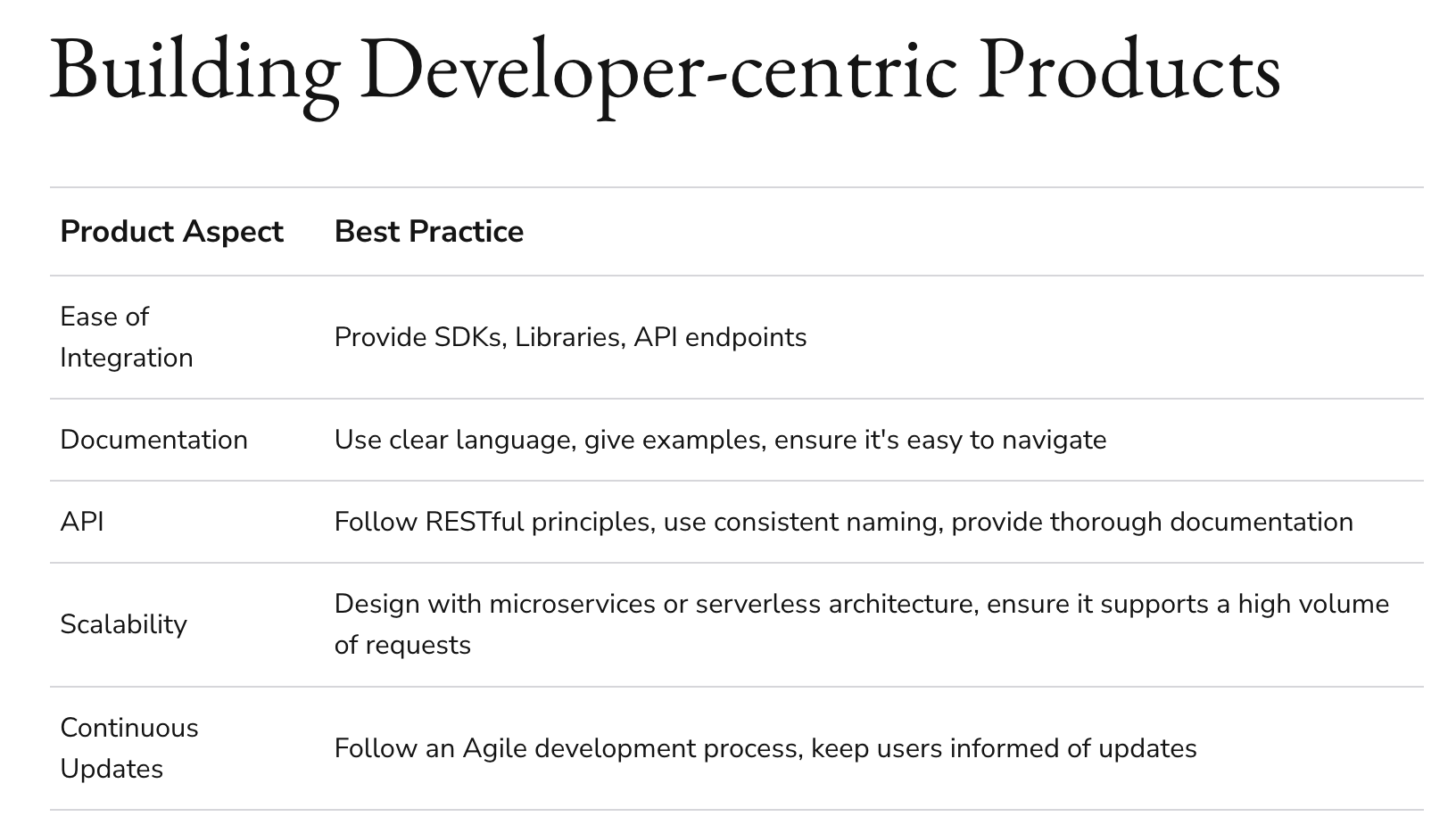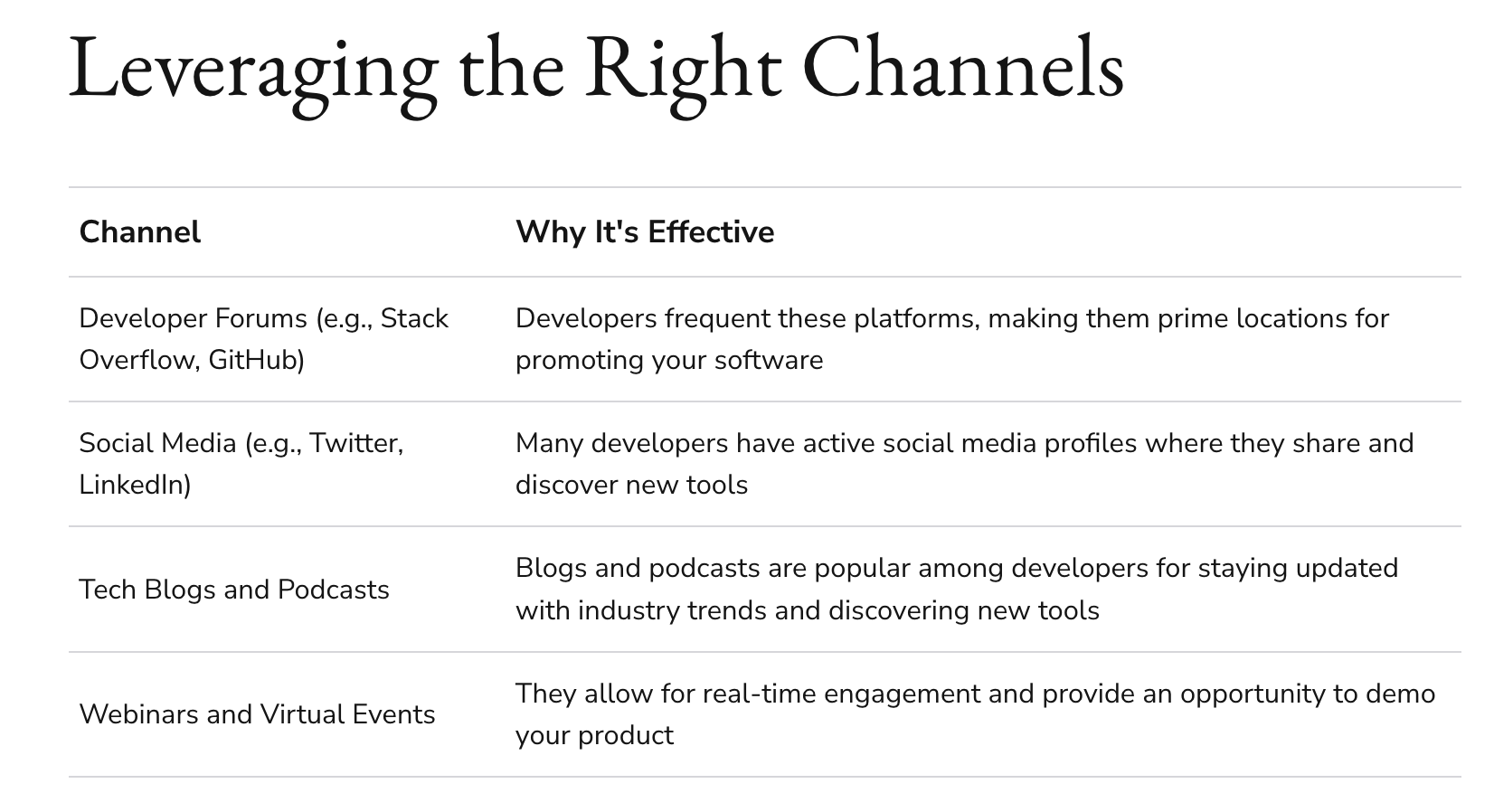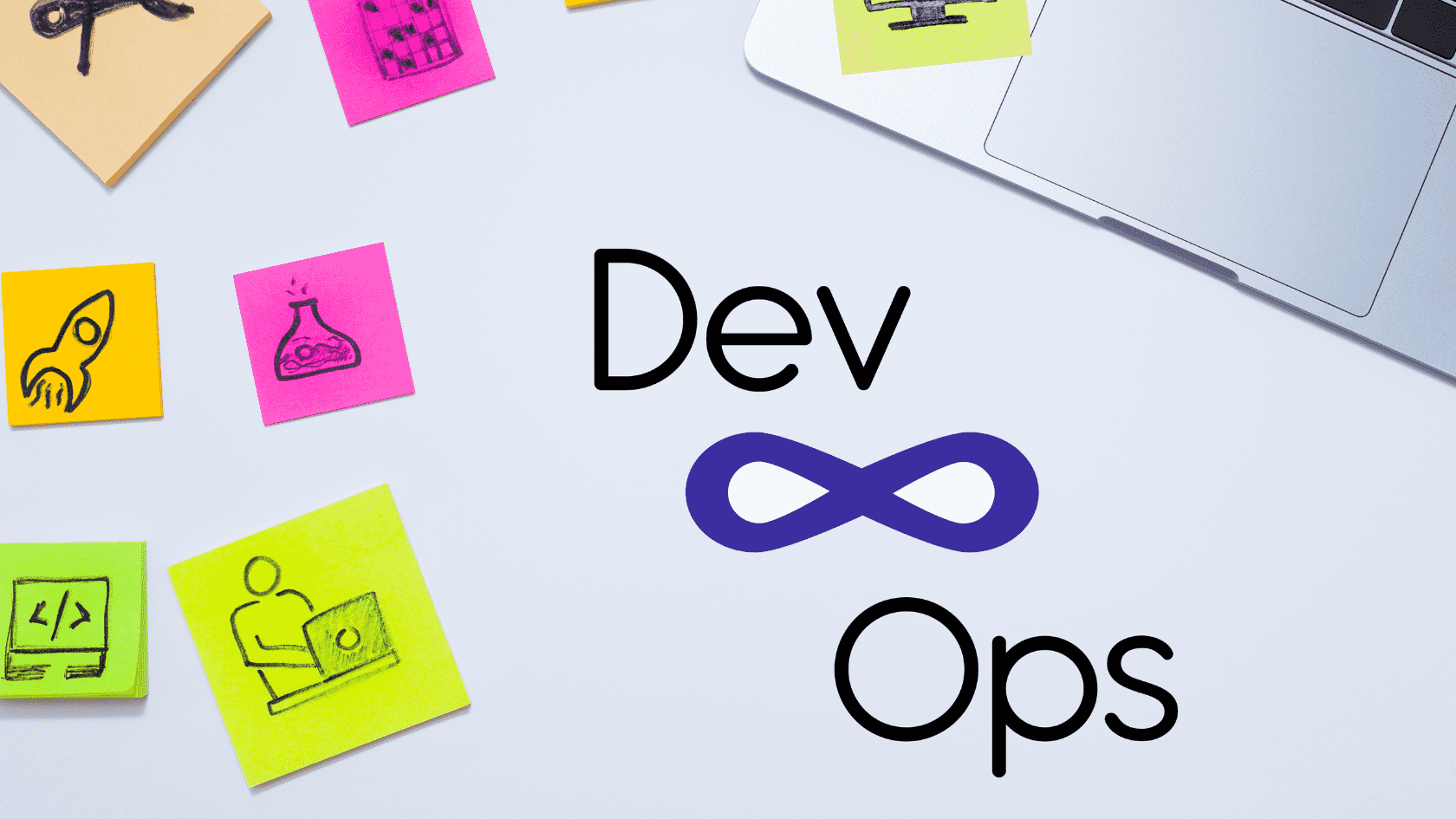"In developer marketing, your code speaks louder than words. Make it count."
In a world where software is eating the world, developers have become one of the most pivotal consumer groups. They're not just coding geeks who dwell in the basements anymore; they're the modern world's builders. They are decision-makers who can make or break your software product.
It's crucial to understand their mindset, needs, and what drives them to try out a new tool or software. This guide is designed to aid you in developing a comprehensive marketing strategy tailored for software developers. Let's dive in.


Table of Contents
- Understanding Developers
- Building the Right Product
- Crafting the Perfect Message
- Nailing the Product Presentation
- Leveraging the Right Channels
- Nurturing Developer Communities
- Measuring Success
- Wrap Up and Key Takeaways

1. Understanding Developers
Developers are problem solvers, creative thinkers, and lifelong learners. They're driven by utility, efficiency, and the power to create. Understanding this mindset is the cornerstone of any successful developer marketing strategy.
What Developers Want
- Simplicity: Developers value tools that help them write less code, not more.
- Clarity: Documentation, guides, or any learning resources need to be clear, concise, and jargon-free.
- Reliability: They appreciate robust and reliable tools with excellent support.
- Community: Developers seek active communities where they can learn, share, and grow.
- Innovation: Developers are innovators. They're constantly on the lookout for new and better ways of doing things.
Understanding these characteristics can help you shape your marketing strategy.


2. Building the Right Product
The greatest marketing strategy will falter if your product doesn't deliver on its promise. Prioritize the following while building your software tool:
- Ease of Integration: Your software should easily integrate into existing workflows.
- Clear Documentation: Provide comprehensive documentation that caters to different levels of expertise.
- Robust API: A powerful API is a developer's best friend. Make sure it's well-documented and versatile.
- Scalability: Developers want tools that scale with their projects. Your product should grow as they do.
- Continuous Updates: Show your commitment to the product by releasing regular updates and new features.
// Good code documentation example
/**
* This function calculates the area of a circle.
* @param {number} radius - The radius of the circle.
* @return {number} The calculated area of the circle.
*/
function calculateArea(radius) {
return Math.PI * Math.pow(radius, 2);
}

3. Crafting the Perfect Message
Once you have a solid product, it's time to craft a message that resonates with your target audience.
- Address Pain Points: Speak directly to the challenges developers face and how your product can help alleviate them.
- Show, Don't Tell: Use practical examples to illustrate your product's benefits.
- Use their Language: Speak to developers in a language they understand. Avoid unnecessary marketing buzzwords.
- Be Honest: Developers respect honesty and transparency. Admit when you don't know something or when you've made a mistake.

4. Nailing the Product Presentation
A good product presentation can be the difference between a developer trying out your tool or dismissing it.
- Product Demos: Show off the features of your product in a real-life context. Demos help developers visualize how your product fits into their workflow.
- Use Cases: Developers are pragmatic. Show them exactly how your product can be used in their projects.
- Testimonials: Testimonials from respected developers in the community can have a huge impact.

5. Leveraging the Right Channels
Where you promote your product matters. Developers congregate in specific online spaces. Prioritize these channels:
- Developer Forums: Sites like Stack Overflow, GitHub, and Reddit.
- Social Media: Twitter and LinkedIn, particularly.
- Blogs and Podcasts: Popular tech blogs or podcasts can be a good platform for exposure.
- Webinars and Virtual Events: Engage your audience through interactive, live content.

6. Nurturing Developer Communities
Developers thrive in communities. Nurturing an active community around your product can be a powerful marketing tool.
- Host Meetups: Organize events for users to share ideas, ask questions, and learn more about your product.
- Encourage Contributions: Open source projects can benefit from community contributions.
- Provide Support: Offer dedicated channels where users can get help and support.
7. Measuring Success
You need to measure the success of your marketing efforts. Key metrics include:
- Product Trials: The number of developers trying out your software.
- Adoption: The number of developers who end up using your software in their projects.
- Community Engagement: The activity in your community forums, meetups, and support channels.

8. Wrap Up and Key Takeaways
Marketing to developers is fundamentally different from traditional marketing. It's about building relationships, engaging in technical conversations, and showing how your product makes a developer's life easier. Remember these key points:
- Understand the developer mindset.
- Build a product that catifies the needs of developers.
- Craft a message that addresses their pain points and showcases your product's value.
- Nail your product presentation and leverage the right channels.
- Nurture an active developer community around your product.
- Measure your success and adjust your strategy accordingly.
In the world of developer marketing, authenticity rules. Don't just sell a product—provide value, build relationships, and above all, respect the craft. Happy coding, and happier marketing!
FAQ
1. Why is marketing to developers often considered challenging?
Marketing to developers can be seen as challenging because developers are a unique audience with specific preferences. They value functionality and utility over flashy advertising and are likely to be put off by overly salesy or gimmicky marketing tactics. They appreciate honesty, transparency, and straight-to-the-point communication. They're also very detail-oriented, so any product-related claim you make should be backed by substantial evidence or they'll see right through it.
2. Why is understanding developers' needs and desires important in marketing?
Understanding your audience's needs and desires is a fundamental principle in any kind of marketing. Developers have unique needs due to the nature of their work. They're looking for solutions that save them time, increase their productivity, or enable them to do something new. By understanding these needs and desires, you can position your product or service in a way that clearly communicates its value to this particular audience.
3. How do we make sure that our software product is developer-friendly?
A developer-friendly software product is one that is easy to use, thoroughly documented, and highly functional. Here are a few aspects you can focus on:
Documentation: Ensure that your software's documentation is detailed, easy to navigate, and provides examples that developers can follow.
APIs: If you're providing APIs, they need to follow the standard conventions and must also be well-documented.
Integration: Provide tools and libraries that make it easy for developers to integrate your software into their existing workflow.
Support: Developers will appreciate a responsive and efficient support team that can quickly help them resolve any issues they may encounter.
4. How do we craft a message that resonates with developers?
When crafting a message for developers, remember to:
Address their pain points: Speak directly to the problems that your software can solve for developers.
Be clear and concise: Avoid jargon and fluff. Get straight to the point about what your software does and how it can benefit the developer.
Show, don't tell: Developers appreciate seeing a product in action. Use examples or case studies to demonstrate your product's benefits.
Speak their language: Use terminology that is familiar to developers. This can make your message more relatable and easier to understand.
5. Which marketing channels work best for reaching developers?
Developers often frequent platforms like GitHub, Stack Overflow, and other online forums. They also read tech blogs, listen to podcasts, and participate in online communities. Hosting webinars or attending developer-centric events, like hackathons and conferences, can also be effective. Social media platforms, particularly LinkedIn and Twitter, can also be beneficial for reaching out to and engaging with developers.
6. Why is community building so important in developer marketing?
Community building is crucial in developer marketing because developers value the opinions and experiences of their peers. They're more likely to trust a product that has a strong, supportive community around it. Having an active community also encourages user-generated content and discussions which can provide you with valuable feedback and insights about your product.
7. How can we measure the success of our developer marketing efforts?
You can measure the success of your developer marketing efforts by tracking key metrics such as:
Product Trials: The number of people who trial your software can give you an indication of how attractive your initial offering is.
Adoption Rate: This shows how many developers are integrating your software into their daily workflows.
Community Engagement: This includes both the size of your community and the level of engagement within it. High levels of community engagement are often a sign of a strong, healthy brand.
Customer Feedback: This can provide insights into what you're doing well and where you can improve.
8. What role does content play in developer marketing?
Content plays a vital role in developer marketing as it helps educate developers about your software, how it works, and how it can benefit them. It's also a great way to demonstrate your expertise and understanding of developers' challenges and needs. Educational and helpful content can include blog posts, tutorials, webinars, documentation, and more.
9. How can we encourage developers to contribute to our community?
There are several ways to encourage contributions:
Open-source parts of your software: This allows developers to contribute to the project directly.
Provide a platform for discussion: A forum or a community platform where developers can ask questions, share ideas, and help each other can foster contributions.
Acknowledge and reward contributions: Recognizing developers for their contributions, whether it's through shout-outs, swag, or other rewards, can motivate them to contribute more.
10. How can we improve our developer marketing efforts?
There's always room for improvement in any marketing strategy. For developer marketing, consider the following:
Continuous Learning: Always be open to learning more about your audience. Their needs and challenges might evolve over time, so it's important to keep up.
Feedback: Regularly ask for feedback from your developer users. Their insights can be very valuable in improving your marketing strategy.
Experiment: Don't be afraid to try out new marketing tactics. What works for one audience might not work for another, so it's important to keep experimenting and iterating on your strategies.
Analyze and Adjust: Keep track of your metrics and adjust your strategies accordingly. What channels are driving the most engagement? What type of content is resonating the most with your audience? Use these insights to inform your future strategies.







